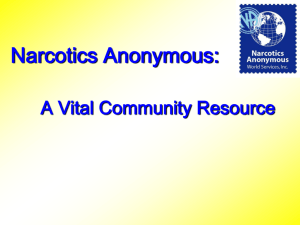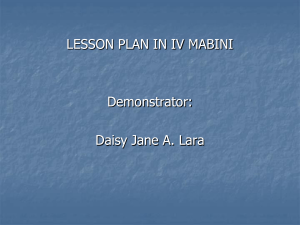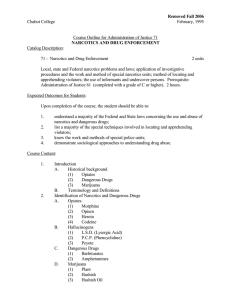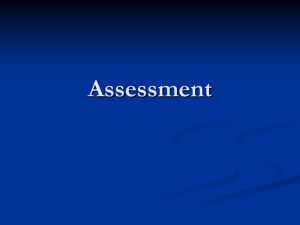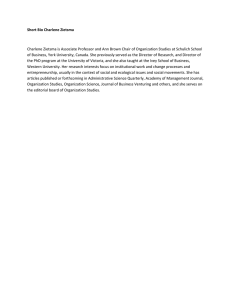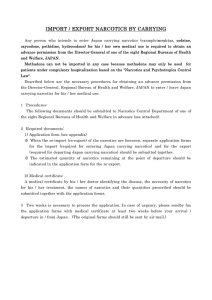Proper Prescribing Office Plans: Key points
advertisement
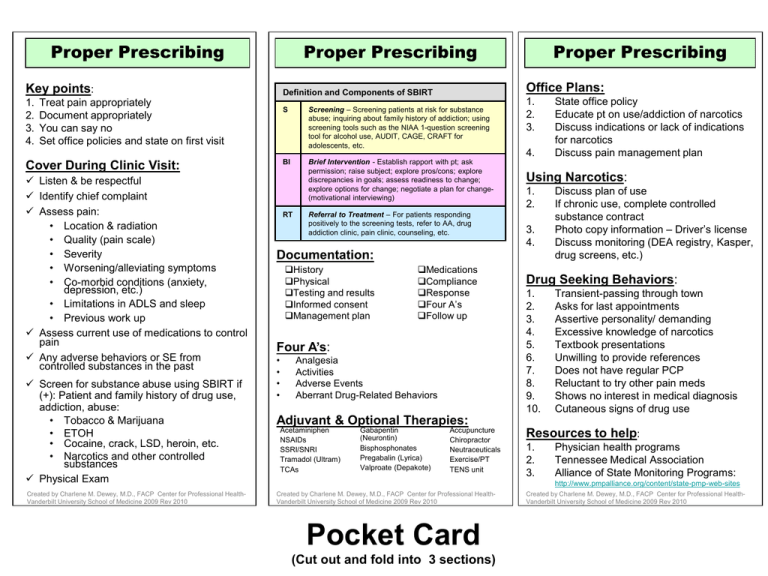
Proper Prescribing Proper Prescribing Key points: 1. 2. 3. 4. Cover During Clinic Visit: Listen & be respectful Identify chief complaint Assess pain: • Location & radiation • Quality (pain scale) • Severity • Worsening/alleviating symptoms • Co-morbid conditions (anxiety, depression, etc.) • Limitations in ADLS and sleep • Previous work up Assess current use of medications to control pain Any adverse behaviors or SE from controlled substances in the past Screen for substance abuse using SBIRT if (+): Patient and family history of drug use, addiction, abuse: • Tobacco & Marijuana • ETOH • Cocaine, crack, LSD, heroin, etc. • Narcotics and other controlled substances Physical Exam Created by Charlene M. Dewey, M.D., FACP Center for Professional HealthVanderbilt University School of Medicine 2009 Rev 2010 Office Plans: Definition and Components of SBIRT Treat pain appropriately Document appropriately You can say no Set office policies and state on first visit S Screening – Screening patients at risk for substance abuse; inquiring about family history of addiction; using screening tools such as the NIAA 1-question screening tool for alcohol use, AUDIT, CAGE, CRAFT for adolescents, etc. BI Brief Intervention - Establish rapport with pt; ask permission; raise subject; explore pros/cons; explore discrepancies in goals; assess readiness to change; explore options for change; negotiate a plan for change(motivational interviewing) RT Proper Prescribing Referral to Treatment – For patients responding positively to the screening tests, refer to AA, drug addiction clinic, pain clinic, counseling, etc. 1. 2. 3. 4. Using Narcotics: 1. 2. 3. 4. Documentation: History Physical Testing and results Informed consent Management plan Medications Compliance Response Four A’s Follow up Four A’s: • • • • Analgesia Activities Adverse Events Aberrant Drug-Related Behaviors State office policy Educate pt on use/addiction of narcotics Discuss indications or lack of indications for narcotics Discuss pain management plan Discuss plan of use If chronic use, complete controlled substance contract Photo copy information – Driver’s license Discuss monitoring (DEA registry, Kasper, drug screens, etc.) Drug Seeking Behaviors: 1. 2. 3. 4. 5. 6. 7. 8. 9. 10. Transient-passing through town Asks for last appointments Assertive personality/ demanding Excessive knowledge of narcotics Textbook presentations Unwilling to provide references Does not have regular PCP Reluctant to try other pain meds Shows no interest in medical diagnosis Cutaneous signs of drug use Adjuvant & Optional Therapies: Acetaminiphen NSAIDs SSRI/SNRI Tramadol (Ultram) TCAs Gabapentin (Neurontin) Bisphosphonates Pregabalin (Lyrica) Valproate (Depakote) Accupuncture Chiropractor Neutraceuticals Exercise/PT TENS unit Resources to help: 1. 2. 3. Physician health programs Tennessee Medical Association Alliance of State Monitoring Programs: http://www.pmpalliance.org/content/state-pmp-web-sites Created by Charlene M. Dewey, M.D., FACP Center for Professional HealthVanderbilt University School of Medicine 2009 Rev 2010 Pocket Card (Cut out and fold into 3 sections) Created by Charlene M. Dewey, M.D., FACP Center for Professional HealthVanderbilt University School of Medicine 2009 Rev 2010 Key points: Office Plans: 1. 2. 3. 4. 1. 2. 3. Treat pain appropriately. Document appropriately. You can say no. Set office policies and state on first visit. 4. State office policy Educate pt on use/addiction of narcotics Discuss indications or lack of indications for narcotics Discuss pain management plan Cover During Clinic Visit: Listen & be respectful Identify chief complaint Assess pain: • Location & radiation • Quality (pain scale) • Severity • Worsening/alleviating symptoms • Co-morbid conditions (anxiety, depression, etc.) Assess current use of medications to control pain Assess use of illicit drugs, alcohol or narcotics to control pain Any adverse behaviors or SE from controlled substances in the past Patient and family history of drug use, addiction, abuse: • Tobacco & Marijuana • ETOH • Cocaine, crack, LSD, heroin, etc. • Narcotics and other controlled substances Created by Charlene M. Dewey, M.D., FACP Center for Professional HealthVanderbilt University School of Medicine 2009 Using Narcotics: 1. 2. 3. 4. Discuss plan of use If chronic use, complete controlled substance contract Photo copy pt information – Driver’s license Discuss monitoring (DEA registry, Kasper, drug screens, etc.) Drug Seeking Behaviors: 1. 2. 3. 4. 5. 6. 7. 8. 9. 10. Transient-passing through town Asks for last appointments Assertive personality/ demanding Excessive knowledge of narcotics Textbook presentations Unwilling to provide references Does not have regular PCP Reluctant to try other pain meds Shows no interest in medical diagnosis Cutaneous signs of drug use Resources to help: 1. 2. Physician health programs. Tennessee Medical Association www.tnmed.org Created by Charlene M. Dewey, M.D., FACP Center for Professional HealthVanderbilt University School of Medicine 2009 (Cut out and fold down center) Proper Prescribing Pocket Card Proper Prescribing
